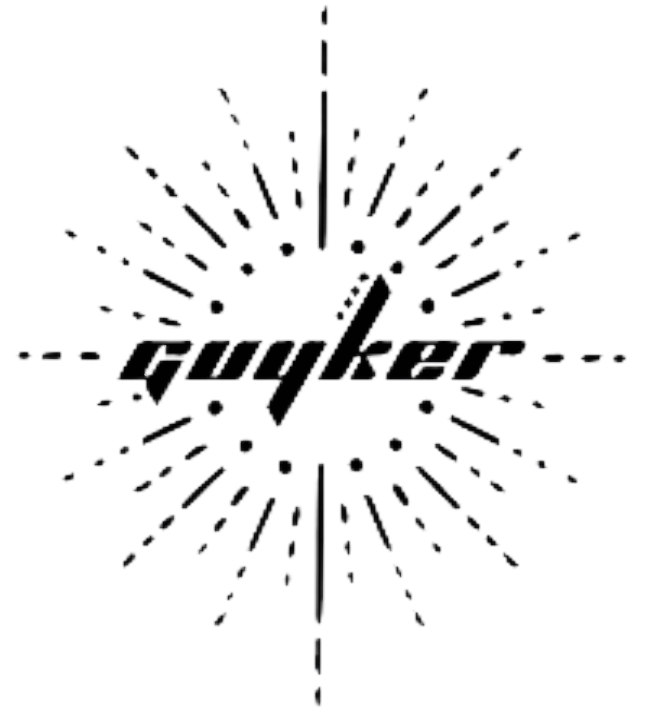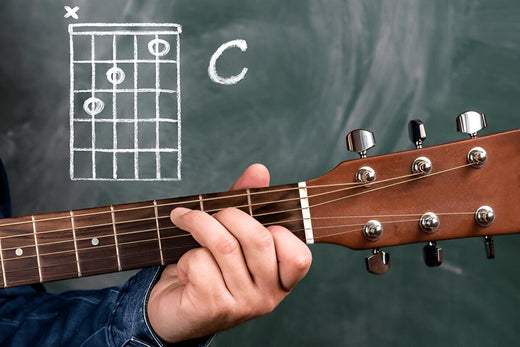Chords are the fundamental building blocks of songs and one of the most commonly used is C. The root/open position version is among the first chords any beginner learns, and the root C major scale is usually the major scale that players learn first.
As for improvising, most players start off using the Am Pentatonic scale, which is also the C major pentatonic. You just can’t play guitar without encountering the C chord and its scales all the time.
But there is a lot more to the humble C chord than just that, so let's find out more, starting with the basics.
The Root C Chord
C isn’t usually the first chord beginners learn; it’s usually A, Am, D, E, and Em because they only span two frets. But when players have got the hang of them, they move on to G, C, and Dm.
The root or open chord is played with the first finger on the second string (B) of the first fret, the second finger on the fourth string (D) on the second fret, and the third finger on the fifth string (A) on the third fret, as shown in the following diagram:

Open C Chord
This can be quite a stretch for beginners, especially since you need to get your fingers as close to the fret wires as possible to ensure the notes ring out properly and are not muffled.
How to get good at playing the C chord on guitar
Changing chords quickly and accurately is the key to making a random series of chords sound like a song. And the best way to improve your changes to and from C apart is with some good old practice, practice, practice.
However, there is one exercise that might help if you are finding your C changes difficult. Start by making the C chord on the fingerboard, then strum it. Now release the pressure from your fingertips slightly, and as you strum, increase the pressure again. Next, relax your fingers even more, then strum again, increasing the pressure as you strike the strings.
Now relax your fingers even more, so that they are barely touching the strings and strum again. Now try lifting your fingers ever so slightly off the strings, then just as the pick strikes the low e-string, increase the tension and press the chord down. Once you get the hang of this you can move your fingers further and further away from the strings then bring them down in place as you strum the chord. With time, you will be able to have your hand completely horizontal underneath the neck and still place your fingers accurately on the C chord in a millisecond.
This exercise also works on any other chord you are currently having problems with as well as any future troublesome chords.
The Barre C Chords
C, as with all the other chords, can be played in numerous places all over the fretboard. So, let’s find out more by taking a look at the…
CAGED Chord System
The CAGED system simplifies how chords are laid out over the guitar fretboard. The letters C-A-G-E-D signify the chord shape and the order in which they occur over the neck.
Taking the chord of C as an example, the first chord shape - the C chord shape - is the open C that we have just been discussing. The root of the chord is found on the third fret of the A string, i.e. A (open) - A# (1st fret) - B (2nd fret) - C (3rd fret).

That’s the C of CAGED covered, let’s move on to the next letter of the word CAGED - A, i.e. an A-shaped chord. This uses the same root as the open C chord, the third fret of the A string. Barre the third fret and play an A shape with your other fingers, or the third finger if it can cover the three strings and lift to leave the first string ring out at the barre.
A-shaped C Chord
Now for the G of CAGED. The root is the C note on the 8th fret of the low E string. Start by barring the 5th fret, then play a G-shaped chord with your other three fingers. If you haven’t played this barre shape before, you’ll probably find the stretch difficult until your fingers get used to it. You can also use a capo, making it much easier to play, if you are either changing the key to match your voice or playing a song that uses a capo on the 5th fret.

G-shaped C Chord
Next, the E of CAGED, which uses the same root as the G-shaped chord. Barre the 8th fret and play an E-shaped chord with your three other fingers to make a C chord, as shown below:

E-shaped C Chord
And finally, we have the D of CAGED, the D-shaped chord. This has the root on the 10th fret of the D string. Barre the 10th fret and play a D-shaped chord with your other three fingers. As with the G-shaped barre, you can also use a capo to play this if it makes it easier.

D-shaped C Chord
You can then start the cycle again by playing the open C shape once again but this time you will need to use your first finger to barre the 12th fret. Then play the A-shaped, G-shaped, etc., chords again until you get to the end of the fretboard.

A little bit of Theory
Lots of guitarists are overwhelmed/afraid of music theory or think that it isn’t that important when playing the guitar. But I’m afraid they’re wrong, theory is important, but, indeed, it can easily be overwhelming. So let’s keep things as simple as we can.
C is the easiest major scale to remember, that’s because it contains the notes - C - D - E - F- G - A - B and back to C. Unlike every other scale, it has no sharps or flats.
A major chord is always made up of the first, third, and fifth degrees (notes) of the major scale. This is termed a chord formula, as shown below:
Major Chord - 1 - 3 - 5 - C - E - G
Therefore, a C chord would contain a C (the 1st), E (the 3rd), and G (the 5th). Obviously, a guitar has six strings, so these notes would need to be repeated, for example, the Root C chord contains three E notes, two C notes, and one G note. If you strum it from its root, the C on the 5th string, it contains two E notes, two C notes, and a G.
The C minor Chord
If we apply a different chord formula to the notes of the key of C, we would get another chord, for example, the formula for a minor chord is the first, flattened third, and fifth degrees of the major scale. Therefore, a C minor chord would contain the notes C, Eb, and G, as shown below:
Minor Chord - 1 - b3 - 5 - C - Eb - G
You can use chord formulas to find the notes of any chord, making them well worth learning allowing you to find and play thousands of chords all over the fretboard.
That’s it for theory, for now. I hope it all makes sense, if not, read through the explanation again with a guitar on your lap and find the notes as you go through it.
Wrapping it Up
You should now know everything there is to know about playing the C chord on guitar. It’s a mainstay of so many great songs, so is well worth learning to play in as many positions as possible.
If you like this article, please share it!
Be sure to join our FB Group Guyker Guitar Parts VIP Group to share your ideas! You can also have connections with like-minded guitar players, Guyker updates as well as discounts information from our FB Group.


Share:
Left-Handed or Right-Handed Reversed Necks? All You Need to Know is Here
What Guitar Strings are Best for My Guitar?